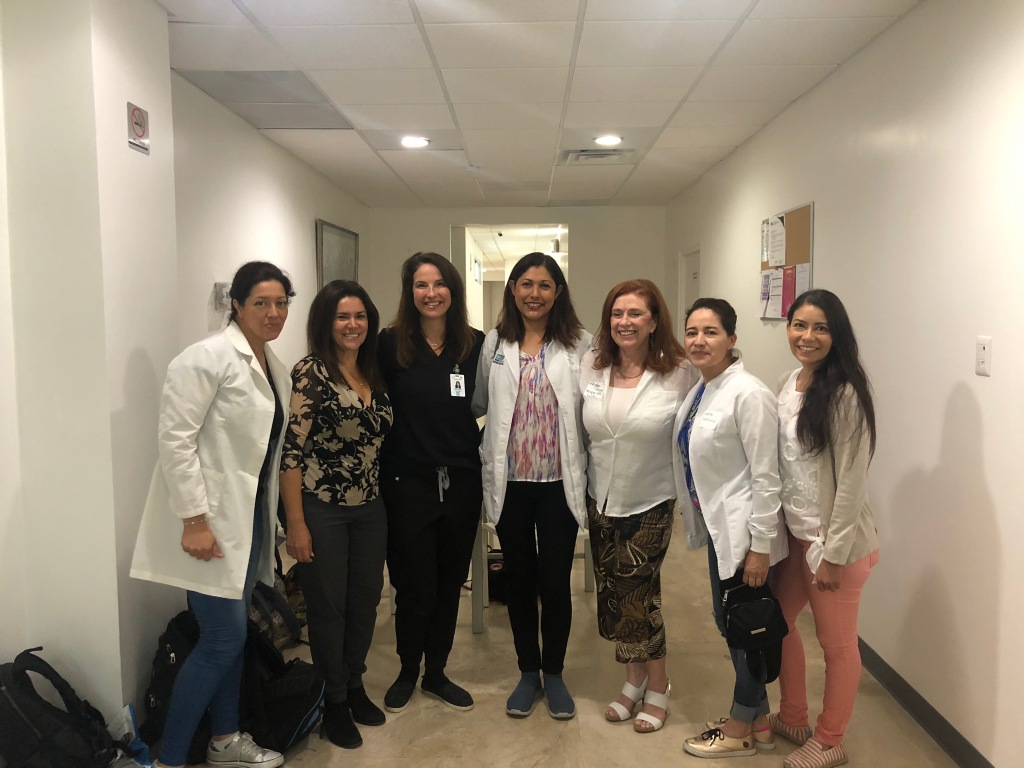By Jessica Blum
When most people hear the words “global health,” images of sub-Saharan Africa, Haiti, and South Asia may all come to mind, among other locations. Regardless, one often imagines a far-off place wrought with starvation, infectious disease and an implied poor health infrastructure. Living in San Diego, we are uniquely situated to defy these expectations. Only a 30-minute drive from Mexico, the experience of driving from Chula Vista and seeing the rolling hills of Tijuana packed tightly with colorful homes and bustling with life is enough to capture anyone’s attention. Within just moments, you cross the most heavily trafficked border in the world and enter one of Mexico’s largest cities.
Tijuana is a quintessential city, with skyscrapers, reckless drivers, and a heavy influx and efflux of tourists. The health of its citizens is largely covered by a national healthcare program, Seguro Popular, that provides care to those who cannot afford it by other means. This is not to suggest that the Mexican healthcare system is perfect or comprehensive, but it exists. One of its shortcomings is in the treatment of pediatric craniofacial conditions requiring reconstructive surgery, and this is where I found my opportunity to help. Several congenital conditions result in anomalies such as cleft lip and palate, micrognathia, microsomia, and craniosynostosis. Many children born with these conditions struggle to find the resources, surgical and otherwise, to obtain the necessary longitudinal care. These conditions all have a profound impact on quality of life, and the later one begins receiving care, the more difficult it is for treatment to restore optimal form and function.
When the principal investigator (PI) on my project, an inspiring craniofacial plastic surgeon, first learned of the health need, she went directly to Mexico to ask how she could help. There was no assumption of need or self-serving heroism. She instead sought an opportunity to collaborate and provide her coveted surgical expertise in a setting where this was indicated; the result is 10+ years of an ongoing professional relationship that has helped hundreds of patients receive lifechanging treatment.
I have spent much of the past year, including this summer, working to measure quality of life in the patient population that my PI and her collaborators treat. Rather than simply assume the benefits of treatment, we must return to the scientific method when measuring the effects of our interventions. We must also ask ourselves whether everything medically necessary is being done to address the issues faced by the craniofacial patient population and their families. This is the goal of my research, and this is what brought me to Tijuana.
At times, I think the most difficult aspect of conducting global health work is everything that happens before you step foot in the other country. My role was to obtain ethical approval to conduct the study at CER hospital in Tijuana, as well as to administer the study. As straightforward as this may sound, there was a steep learning curve in navigating international, bi-lingual communication, as well as in navigating UCSD’s IRB approval process. In global health studies, we learn a lot about the importance of establishing rapport and meeting community stakeholders to earn the trust of the study population. What is often neglected in this discussion is the time and effort required in creating such relationships. In Tijuana, I saw this theory manifest itself firsthand when a collaborator in Mexico repeatedly supported my efforts because of her longstanding relationship with my PI. Trust is not obtained overnight, and ultimately, the key to success was rapport and persistence.
When the time finally came to administer the study, it made all the time and effort worthwhile. Although the format of the survey is self-response, being asked about one’s quality of life opens a door to conversations about the struggles and successes of parents and patients receiving craniofacial treatment. The stories people share are moving enough to keep me coming back for the rest of my life. They are the kinds of words that stick with you and marinate in your mind for days to come. The impact of the study and its implications truly set-in for me when the mom of a patient I had just met gave me a big hug. There are moments when research can feel slow or redundant, but these interactions bring me back to the bigger picture and reignite my motivation.
When you seek out a global health experience, it is with the expectation of personal growth from living outside your comfort zone. Although I was at first doubtful whether I would experience this in a country driving-distance from home, I can now wholeheartedly say that there is plenty to be learned. There were many moments of feeling lost, trying to communicate with native Spanish speakers after only a semester of medical Spanish and some Rosetta Stone under my belt. There were times of doubt as to whether I would insult or flatter people by offering to cover our lunch bill. Overall though, there were times of beauty, learning about another language and culture, as well as how healthcare changes over space and time. Next time you think global health, don’t let your mind wander too far, because there may be an incredible opportunity close to home.




